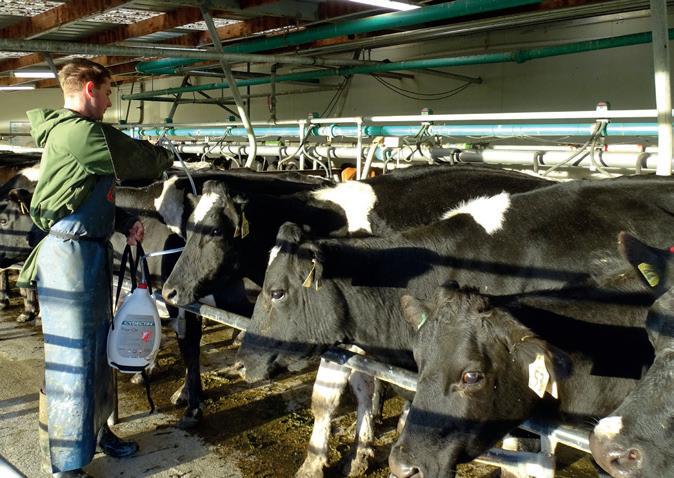
3 minute read
Drenching outside of autumn
What is the purpose of an autumn drench?
Many farmers drench their cattle in autumn. But not all. What are the reasons for this variation? Parasites have significant impacts on the health of your herd, reducing milk production, body condition and fertility. Removing parasites by drenching, or keeping cattle off wormy pastures will result in incremental improvements in production, whether you can see it or not. Although you’ll probably see the results in their dry rear ends!
Internal parasites such as Ostertagia ostertagi – the main production limiting worm in cattle – cause damage in several ways. The immature larvae wage an ongoing battle with cattle, who have to rid themselves of these pests on a daily basis. This costs protein and energy, which could be better spent on growth, milk production, fertility and body condition. Larvae burrow into the gut lining, damaging it so acids aren’t produced properly. Adult worms feed off the gut lining, resulting in damage which needs to be repaired - more losses! So why do many farmers choose autumn to treat? Parasites like warm moist weather for optimal survival to the infective stage. In ideal conditions, this can be as short as 7-10 days, although it usually takes a few weeks. Young calves have no immunity to parasites and are major contributors of eggs onto pasture. Usually this allows for a peak of infective larvae in late autumn/early winter. As dairy cows wind down to the end of the season, the aim is to keep them milking while minimising losses in body condition. This is all happening over a period when they are ingesting more parasites than at any other time of the year. A treatment of Cydectin® Pour-On in the month before dry off can be beneficial. Unlike most pour-on’s, it protects from parasites for longer, killing incoming Ostertagia larvae for 35 days. With Cydectin on board, your cows can eat infected pasture but still optimise their production. The same is true for beef cows and young stock, who are all exposed to more larvae at this time. For adult cattle that are in poor condition, stressed, have had previous illnesses or if feed is tight, they’ll be more susceptible to parasite infection, so treatment for these individuals is a good option. Studies conducted in New Zealand found dairy cows treated with Cydectin Pour-On produced on average, 4.2kg more milk solids than those left untreated, regardless of the time of year, whether at late lactation, dry off or calving1. To make things more convenient, Cydectin Pour-On is nil withholding, so treated cows can still go to slaughter, be milked and their bobby calves are okay too, making it a great option to have in the shed.
| Autumn drenching in the month before dry off can be beneficial to the dairy herd.
If you think some of your cows will benefit from a Cydectin treatment this year, talk with your local Farmlands Technical Field Officer or the friendly team at your local Farmlands store.
Article supplied by Zoetis
Zoetis New Zealand Limited. Tel: 0800 963 847; www.zoetis.co.nz. Cydectin is a registered trade mark of Zoetis. ACVM No. A6203. 1. Murphy, A. The effect of treatment with moxidectin, a long acting endectocide, on milk production in lactating dairy cows Buiatrics World Congress, 1998
























